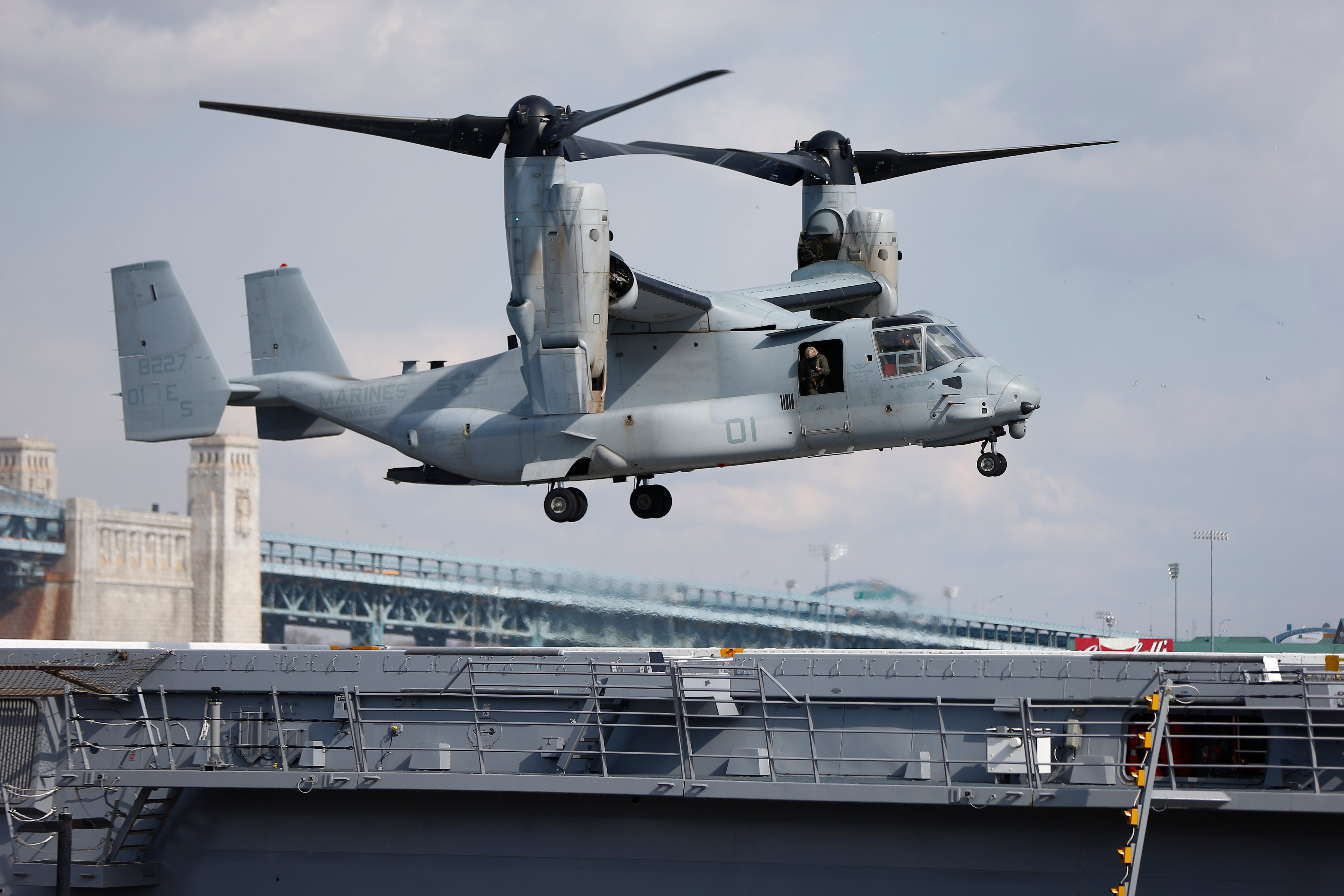Osprey 'black box' from fatal Japan crash that killed 8 recovered with data intact, Air Force says
The Air Force has recovered the flight data recorder from the Air Force CV-22B Osprey that crashed off the coast of Japan in late November, and the data is intact — which could provide valuable clues for investigators as to what caused the crash

Your support helps us to tell the story
From reproductive rights to climate change to Big Tech, The Independent is on the ground when the story is developing. Whether it's investigating the financials of Elon Musk's pro-Trump PAC or producing our latest documentary, 'The A Word', which shines a light on the American women fighting for reproductive rights, we know how important it is to parse out the facts from the messaging.
At such a critical moment in US history, we need reporters on the ground. Your donation allows us to keep sending journalists to speak to both sides of the story.
The Independent is trusted by Americans across the entire political spectrum. And unlike many other quality news outlets, we choose not to lock Americans out of our reporting and analysis with paywalls. We believe quality journalism should be available to everyone, paid for by those who can afford it.
Your support makes all the difference.The Air Force has recovered the flight data recorder from a CV-22B Osprey that crashed off the coast of Japan in late November with its data intact, which could provide valuable clues for investigators as to what caused the fatal accident.
Eight Air Force Special Operations Command service members were killed in the Nov. 29 crash, which occurred off the coast of Yakushima Island in southwestern Japan. The Osprey was on a routine training flight enroute to Okinawa.
Finding the voice and data recorder, or “black box,” is a critical part of the accident investigation; some black boxes in previous Osprey accidents have not survived those crashes. The recorder is being sent to a lab for data retrieval and analysis of the data is expected to take several weeks, the Air Force said. In addition, the Navy salvage ship USNS Salvor was able to recover most of the Osprey's wreckage from the sea floor and transport it to Marine Corps Air Station Iwakuni for analysis.
The Air Force was able to determine within days of the crash that a material failure — that something went wrong with the aircraft — and not a mistake by the crew — led to the deaths. The military's entire Osprey fleet has been grounded since Dec. 6. The government of Japan, the only international partner flying the Osprey, has also grounded its fleet.
The U.S.-made Osprey is a hybrid aircraft that takes off and lands like a helicopter but can rotate its propellers forward and cruise much faster, like an airplane, during flight.
The crash raised new questions about the safety of the Osprey, which has been involved in multiple fatal accidents over its relatively short time in service. A congressional oversight committee has also launched an investigation into the Osprey program. More than 50 U.S. service members have died in Osprey crashes over the lifespan of the program, and 20 of those died in four crashes over the last 20 months.
In the weeks since the crash, the Marine Corps has said some Osprey flights could be approved on an emergency basis but the rest of the fleet, including the Ospreys that transport White House staff, remain grounded.
Divers were able to locate the remains of seven of the eight crew members in the weeks following the crash. The body of Maj. Eric Spendlove, a medical operations flight commander, has not been found.